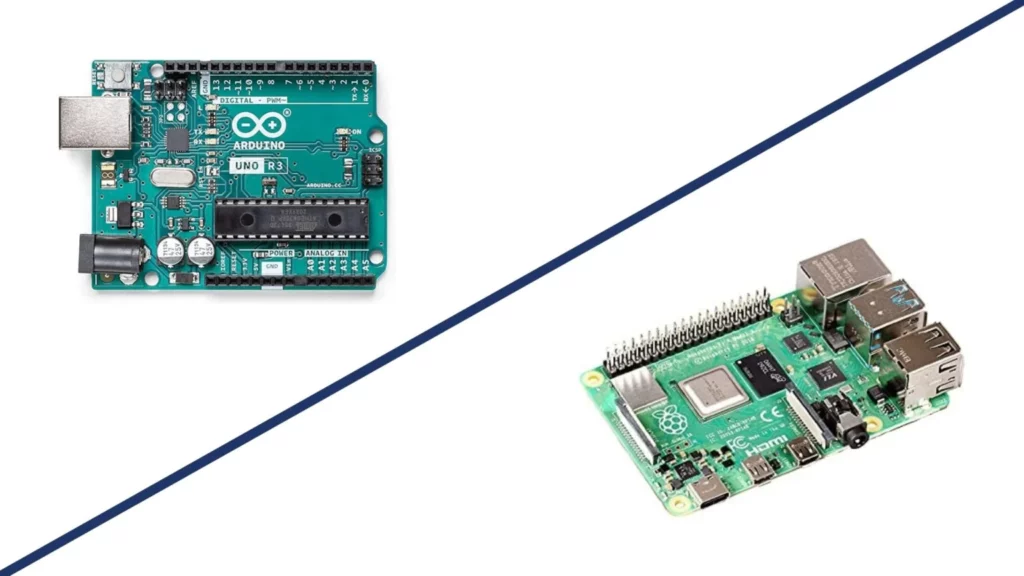Whether we are addressing professors, engineers, programmers or even researchers, everyone agrees on one point: the Raspberry Pi 4 is the best single-board computer and one of the safest values available on the market. But how does it compare to Arduino, and above all, how to tackle this issue effectively?
When it comes to classrooms, the Raspberry Pi 4 is a popular platform for teaching programming, electronics, and robotics. Its powerful processing capabilities and user-friendly interface make it an ideal choice for students and teachers. However, there are times when using an Arduino with a Raspberry Pi 4 can provide significant benefits, especially when exploring robotics applications.
In this article, we’ll explore why you might want to use an Arduino when you’re already using a Raspberry Pi 4 as part of your teaching and learning experience.
Before diving into the details, it should be mentioned that Arduino is an electronic board with a simple microcontroller, while Raspberry Pi is a full-fledged computer. Let’s go!
1. Controlling hardware has never been smoother
One of the main benefits of using an Arduino alongside a Raspberry Pi 4 in classrooms is that it provides more precise control of hardware. While the Raspberry Pi 4 is capable of running a wide range of software, including programming languages such as Python and C++, it does not offer the same level of direct control over other hardware as an Arduino. although it already covers major applications.
By using them together, students can learn how to directly control motors, sensors, and other hardware components, which can help them better understand the fundamentals of robotics (and much more!).
2. Ready for practicality?
Another benefit linked to the use of both devices in an educational setting is that it can help students develop practical skills. Although programming is an important part of teaching robotics, it is not the only skill students need to develop.
By using an Arduino to control hardware, students can learn to design circuits, read technical schematics, and solve problems, all essential skills for anyone who wants to work and grow confidently in the field of robotics.
3. Think outside the robot
Using an Arduino alongside a Raspberry Pi 4 can also help students develop their creativity and problem-solving skills. Because Arduinos are highly customizable and can be used to control a wide range of hardware components, students have the flexibility to design and build their own robot, even from scratch.
It will encourage them to think outside the box and develop their own unique solutions to problems in their path.
4. Tight budget? No problem.
In addition to these educational benefits, using these two platforms together can also be more cost-effective for universities and career-oriented high school teachers. Although Raspberry Pis are relatively affordable, they can get expensive when you need to purchase multiple units for a classroom or lab. With a little planning and measuring, teachers can still create affordable and scalable systems for teaching robotics.
5. Open-sourceness?
Thanks to the plenty of documentation (just like ours), you will be able to create your own customized Arduino board, something that is much harder to do with a Raspberry Pi as it’s not fully open-source when it comes to its hardware.
That being said, as as seen on a previous article, the Raspberry Pi Foundation benefits from a great community, and so does Arduino. Dont walk alone!
6. Measure is the roboticist’s best friend
One of the main challenges is the management of the communication between the two devices. Depending on the project, this may require the implementation of a personalized communication protocol or, under certain conditions, the use of a pre-existing library.
Additionally, using multiple devices can add complexity to the system design and increase overall cost and maintenance requirements. Remember to move forward step by step to keep your project in good shape!
Ultimately, using both platforms can provide many advantages over using either device alone in teaching robotics. By providing more precise control over hardware, helping students develop practical skills, encouraging creativity and problem solving, and providing a more cost-effective solution for teachers, using Arduino alongside Raspberry Pi can create a more efficient and engaging educational experience for engineering students.
Educators can leverage the strengths of both devices and create more convenient and engaging robotics teaching experiences for learners.
Whether you teach in a classroom or run a robotics club, considering their use will help you create an unforgettable robotics experience!














